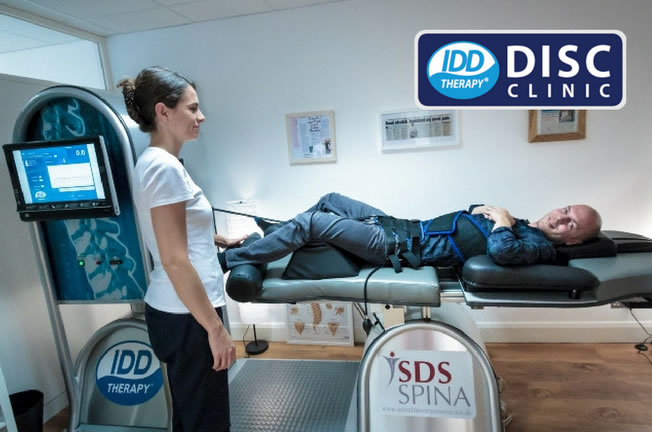Back and neck pain affect millions of people worldwide, often leading to discomfort, reduced mobility, and difficulty performing daily activities. Problems like herniated discs, sciatica, degenerative disc disease, and muscle stiffness are becoming more common due to long hours of sitting, poor posture, and stressful lifestyles. As patients look for safer and more effective alternatives to surgery, Spinal Decompression Therapy has emerged as a popular, non-invasive treatment option. This advanced therapy gently stretches the spine, reduces pressure on spinal discs, and promotes natural healing without the need for injections or medication.
What Is Spinal Decompression Therapy?
Spinal Decompression Therapy is a non-surgical, computer-controlled treatment that uses a specialized decompression table to relieve pressure from the spinal discs. These discs act as cushions between the bones in the spine (vertebrae). When a disc becomes injured, bulges out, or herniates, it can irritate nearby nerves, causing pain, numbness, or weakness.
The therapy works by applying a gentle pulling force on the spine, creating more space between the vertebrae. This reduces pressure inside the disc and allows the disc material to move back into its correct position. As a result, pain is reduced, mobility improves, and the spine begins to heal naturally.
How Does the Therapy Work?
During a session, the patient lies comfortably on a decompression table while a harness is attached around the pelvis or chest. The machine is programmed according to the patient’s condition, age, height, and weight. The decompression table then gently stretches and relaxes the spine in slow, controlled cycles.
Here’s what happens inside your spine during the session:
1. Reduction of Disc Pressure
Spinal discs often become damaged by pressure created through heavy lifting, sudden movements, or poor posture. Decompression reduces this pressure, giving the discs and surrounding tissues room to heal.
2. Creation of Negative Pressure
A vacuum-like effect is created inside the disc, which can help pull herniated or bulging disc material back into place.
3. Improved Flow of Nutrients
Spinal discs do not receive a direct blood supply. Instead, they depend on movement and pressure changes to absorb nutrients. Decompression increases this nutrient exchange, allowing the discs to rehydrate and repair themselves.
4. Relief for Compressed Nerves
As pressure on the disc decreases, the nerves around the spine begin to relax. This offers relief from pain, numbness, tingling, and weakness.
Most sessions last between 20 to 30 minutes, and the treatment is painless. Many patients report feeling a sense of relaxation similar to gentle stretching.
Conditions Treated by Spinal Decompression
Spinal Decompression Therapy is commonly used to treat several chronic spine-related conditions. These include:
- Herniated or Bulging Discs – When part of the disc pushes out and presses on nerves, decompression helps pull the disc material back into place.
- Sciatica – Pain radiating from the lower back down the leg often occurs due to pressure on the sciatic nerve. Decompression helps reduce this nerve compression.
- Degenerative Disc Disease – As discs age and lose water content, they become thinner and less flexible. Decompression helps restore hydration and improve disc function.
- Spinal Stenosis – This is a narrowing of the spinal canal that causes nerve compression. Decompression helps create more space for the nerves.
- Chronic Neck and Back Pain – Long-term pain caused by muscle tension, disc problems, or poor posture can be relieved through decompression.
- Facet Joint Syndrome – Decompression helps reduce pressure on the facet joints, which may become inflamed and painful.
Benefits of Spinal Decompression Therapy
Spinal Decompression Therapy offers several advantages, making it one of the most trusted non-surgical treatments for spine conditions.
- Non-Surgical and Safe – There is no need for anesthesia, injections, or hospital stays. Patients can return to normal activities right after their session.
- Drug-Free Pain Relief – The therapy helps relieve pain without depending on painkillers or anti-inflammatory medications.
- Targets the Root Cause – Instead of masking symptoms, decompression addresses the underlying problem by reducing disc pressure and improving spinal alignment.
- Encourages Natural Healing – By improving nutrient flow and hydration, decompression helps the spine heal naturally.
- High Success Rate – Many patients experience improvement within the first few sessions, especially for conditions like herniated discs and sciatica.
- Comfortable and Relaxing – The treatment is gentle and adjustable to each patient’s comfort level.
What to Expect During a Session
Before starting treatment, a spine specialist performs a full evaluation, which may include X-rays or MRI scans. This ensures that decompression is suitable for the patient.
During a session:
- You lie comfortably on the decompression table.
- A harness is placed around the hips or chest.
- The machine applies a slow, controlled stretching force.
- You feel a gentle pull—not pain.
- The machine alternates between stretching and relaxing phases.
- A session lasts about 25–30 minutes.
Some clinics also combine decompression with other treatments such as:
- Laser therapy
- Chiropractic adjustments
- Shockwave therapy
- Physical therapy exercises
These combinations often speed up recovery and make the treatment more effective.
How Many Sessions Are Required?
The number of sessions depends on the severity of the condition, but most treatment plans include:
- 12 to 24 sessions
- 2 to 3 times per week
- Over 4 to 6 weeks
Some patients feel relief after just a few sessions, while others notice gradual improvement over the complete course.
Who Should Avoid Spinal Decompression?
Although decompression is safe for most people, it may not be suitable for:
- Pregnant women
- Patients with spinal fractures
- Individuals with severe osteoporosis
- People with spinal tumors or infections
- Patients with metal implants in the spine
A proper evaluation by a specialist is necessary before starting treatment.
Is Spinal Decompression Therapy Effective?
Many studies and clinical observations show that spinal decompression can significantly reduce pain and improve mobility for patients with disc-related problems. Clinics often report success rates between 70% and 90% for conditions like herniated discs and sciatica. Patients who complete their full treatment plan tend to receive the best results.
Effectiveness also depends on:
- Correct diagnosis
- Consistency with sessions
- Following recommended exercises and lifestyle changes
- Avoiding activities that strain the spine
When combined with strengthening and stretching exercises, decompression offers long-term relief and helps prevent the problem from returning.
Final Thoughts
Spinal Decompression Therapy is a modern, non-invasive treatment designed to relieve back and neck pain by reducing pressure on spinal discs and nerves. Its ability to target the root cause of spine problems—without surgery or medication—makes it an increasingly preferred option for patients worldwide. Whether you are dealing with herniated discs, sciatica, chronic pain, or degenerative disc disease, decompression therapy offers a safe and effective path to long-term relief.
If back or neck pain is affecting your daily life, consulting a spine specialist about spinal decompression may be the first step toward a healthier, pain-free future.
Final Thoughts
Spinal Decompression Therapy is a modern, non-invasive treatment designed to relieve back and neck pain by reducing pressure on spinal discs and nerves. Its ability to target the root cause of spine problems—without surgery or medication—makes it an increasingly preferred option for patients worldwide. Whether you are dealing with herniated discs, sciatica, chronic pain, or degenerative disc disease, decompression therapy offers a safe and effective path to long-term relief.
If back or neck pain is affecting your daily life, consulting a spine specialist about spinal decompression may be the first step toward a healthier, pain-free future.








Leave a Reply